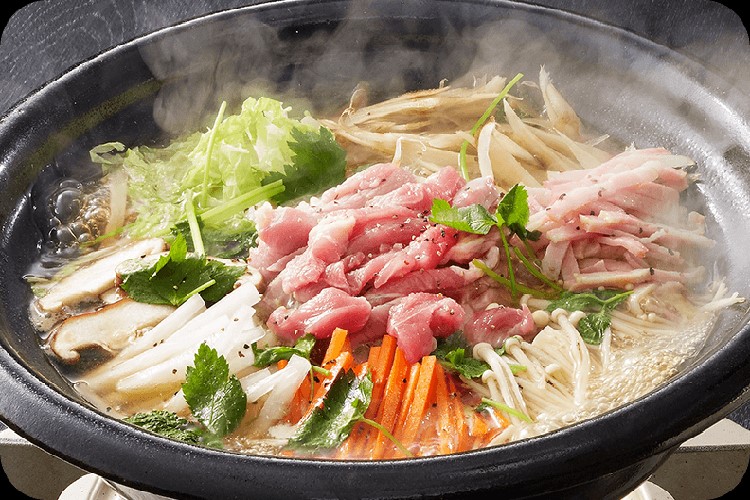As autumn leaves begin to fall and the air turns crisp, Japan slowly transitions into one of its coziest and most heartwarming seasons. While the summer months are filled with lively festivals and fireworks, winter brings a slower rhythm — one marked by the inviting aroma of simmering broths and the soft chatter of people gathered around the table. This is the season of oden and nabe, two dishes that perfectly capture the spirit of warmth and togetherness in Japanese culture.
Oden: Japan’s Classic Winter Comfort
Oden is one of Japan’s most beloved winter dishes — a humble yet deeply flavorful stew that has been enjoyed for centuries. Its roots can be traced back to the Edo period, when it began as a simple skewer dish and evolved into the comforting broth-based meal we know today.
The base of oden is a light soy-flavored dashi broth, in which a variety of ingredients are slowly simmered for hours. Each piece — whether it’s a tender slice of daikon radish, a perfectly boiled egg, a piece of fish cake (chikuwa or hanpen), or a block of tofu — absorbs the delicate flavors of the broth. The result is a warm, savory dish that feels like a hug in a bowl.
Oden can be found almost anywhere in Japan during the colder months. Convenience stores such as 7-Eleven, Lawson, and FamilyMart start offering steaming oden counters around late autumn, where you can choose your favorite ingredients and enjoy them on the spot. But for a truly authentic experience, visiting a local oden-ya (oden specialty restaurant) or an old-fashioned izakaya is a must.
Each region of Japan has its own variation of oden:
- Shizuoka Oden – features a dark soy-based broth with skewered ingredients sprinkled with powdered fish and seaweed.
- Nagoya-style Oden – often uses miso broth for a richer, heartier flavor.
- Kansai-style Oden – known for its clear, delicate broth that highlights the natural taste of the ingredients.
Nabe: A Dish to Share and Celebrate
If oden is the quiet comfort of winter, nabe (hot pot) is its joyful, social side. The word nabe literally means “pot,” and it refers to a wide variety of dishes where ingredients are simmered together in a large communal pot — usually placed at the center of the table.
Families, friends, and even coworkers often gather around a steaming nabe during the cold months. The process of cooking and eating together — adding ingredients, waiting for the broth to bubble, sharing from the same pot — is what makes it such a cherished winter tradition.
There are many regional and seasonal variations of nabe across Japan:
- Sukiyaki – thinly sliced beef cooked in a sweet soy-based broth, often dipped in raw egg before eating.
- Shabu-shabu – paper-thin slices of meat swished briefly in boiling broth, then enjoyed with sesame or ponzu dipping sauces.
- Yosenabe – a “mixed” hot pot that combines seafood, meat, tofu, and vegetables in a single flavorful broth.
- Chanko Nabe – famously eaten by sumo wrestlers, this hearty dish is rich in protein and vegetables.
- Ishikari Nabe (Hokkaido) – made with salmon and miso broth, highlighting the region’s fresh seafood.
Many restaurants specialize in nabe, but it’s also easy to make at home — supermarkets sell pre-made broth bases, ready-to-cook sets, and portable gas stoves designed for tabletop cooking. Sharing a nabe meal at home is one of the most popular ways to spend a winter evening in Japan.
How to Best Enjoy Oden and Nabe in Japan
- Visit winter food festivals: Many towns host small events or outdoor markets where you can sample regional styles of oden and nabe.
- Try local izakaya: These casual pubs often feature house-style oden or hot pot dishes in the colder months.
- Enjoy convenience store oden: It’s affordable, delicious, and available almost anywhere — a great way to experience everyday Japanese comfort food.
- Make your own nabe at home: Purchase ingredients at a supermarket and gather around the table with friends or family.
A Taste of Japanese Winter
Both oden and nabe embody the same idea: slowing down, warming up, and sharing good food with good company. They represent not only the flavors of winter but also the sense of connection that defines Japanese dining culture.
So whether you’re wandering through a winter festival with a steaming cup of oden in hand, or gathered around a bubbling hot pot at home, these dishes offer the perfect way to embrace Japan’s winter season — one bowl at a time.

